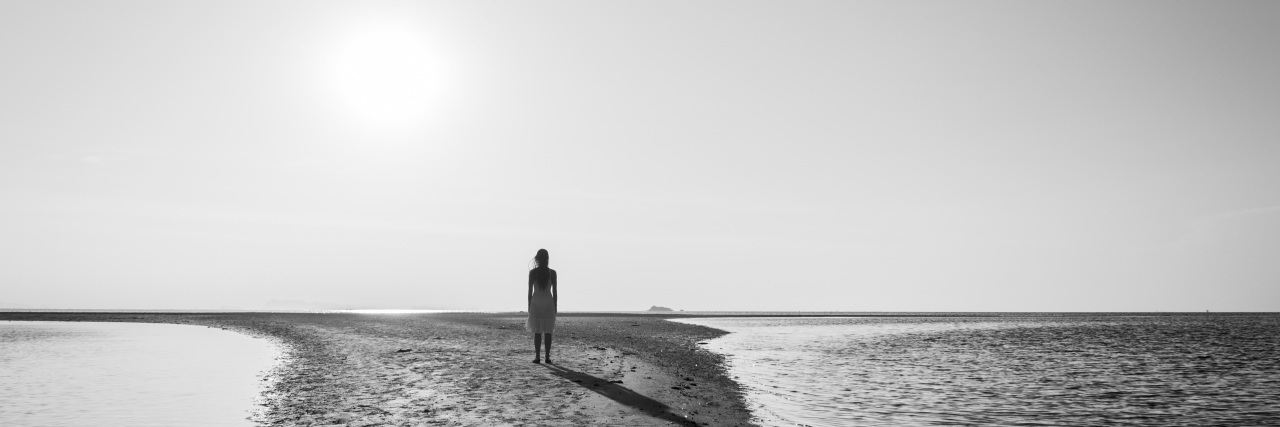During the worst of my pain, I no longer had a memory of my body without pain, even in my imagination, and I couldn’t envision a pain-free future, even though I desperately desired it. I had forgotten who I was without pain, and I was scared of who I was becoming from the experience.
Pain had become so embedded in my body, my daily routines and my awareness, that this constant companion had become too familiar, like a terrorist and his hostage. Pain had been with me for so long that I wasn’t sure what would be left of me if and when it finally departed.
Would it take most of me with it? What would it mean about who I am if pain never left? Do I even know who I am anymore?
Rediscovering the Self After Pain
In order to find myself again and to re-engage with the “real” me (as opposed to seeing myself only as “the one in pain”), I had to disengage my self-image and feelings of self-worth from my experience of pain and my body’s limitations.
I worried that my injury, my pain, and my being in need of assistance had turned me into a weak and needy person. I had to realize that just because my body felt weak, it didn’t mean I was weak as a person. Just because my body was in pain, it didn’t mean I had become the pain.
I realized that because I had been in pain for a long time, I had been living almost entirely in reaction to pain. I had allowed pain to become the organizing principle in my life, the central power. I had shifted all my choice making onto pain’s shoulders. After all, it seemed to rule everything.
It seemed like the only choice there was, but there was a subtle but important shift that was necessary for my healing process, and that was to move the responsibility, power, and decision-making back onto my own shoulders. This became part of dis-identifying with pain and disentangling myself from it.
While pain was certainly the reason I couldn’t do many things, I needed to stop thinking of it as the director of my life.
Dis-Identifying With Pain
The process gradually unfolded something like this:
1. Pain Arrived: I resisted, did all the “right” things, including therapies and medications. Pain didn’t leave, so I tried harder to get rid of it, adding alternative therapies, prayer, more willpower, more and different medications etc.
2. Pain Stayed: It still wouldn’t leave. It even got worse. The longer I lived with pain, the more difficult it became to see myself clearly as a person with pain, rather than as the pain.
3. I Learned to Work With Pain: I eventually came to a place of honoring pain’s presence and its unusual gifts. I recognized pain as something that was trying to heal itself in and through me. I stopped resisting and fighting against pain (which seemed to only make it worse anyway) and begin to work with it and through it, regaining a sense of self that was not utterly beholden to pain as dictator and director.
4. I Realized Pain Was Only One Aspect of My Life, Not the Totality: I learned to work with pain differently, seeing both it and myself from a different perspective. Pain represents a very demanding part of my experience, but it was not who I was. It was a landscape I was walking through. My inner self was still intact.
By not fighting and resisting, my whole body became more relaxed. Pain was still with me, but not as acute, and I began to have a greater sense of well-being despite its presence. My body began to heal because I was allowing myself to breathe more deeply, stop demanding pain to leave immediately, relax around the situation I was in and take my time. I was then able to ask myself who I wanted to become as a result of the incredibly challenging experience of living with pain. What have I learned from this experience? What can I share? What can I give others?
When I reconnected with my inner self while still in pain and didn’t wait for it to leave, I found a sense of renewal. It was a challenge at first, but I came to accept all of my experience with pain as part of a greater path, putting myself at the center rather than pain. This simple but profound shift allowed me to begin to live with more ease, grace, well-being and inner peace. Over time, this has led to greater healing and greater release of pain.
Getty image by Josu Ozkaritz.

